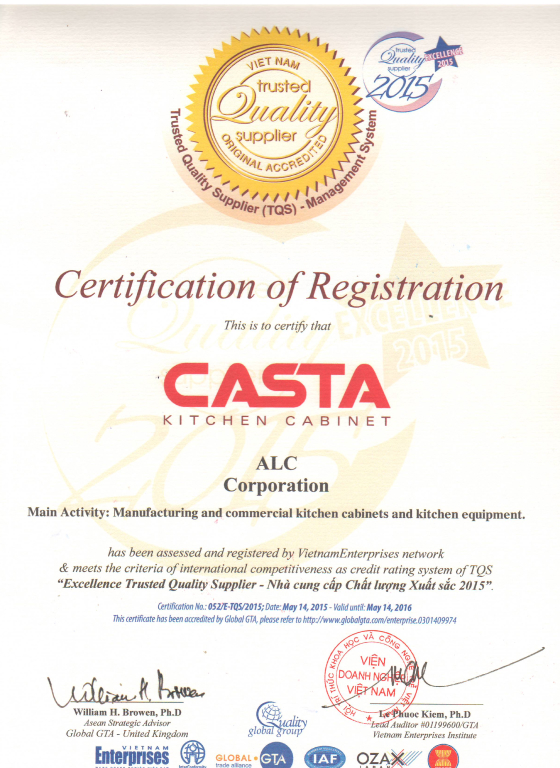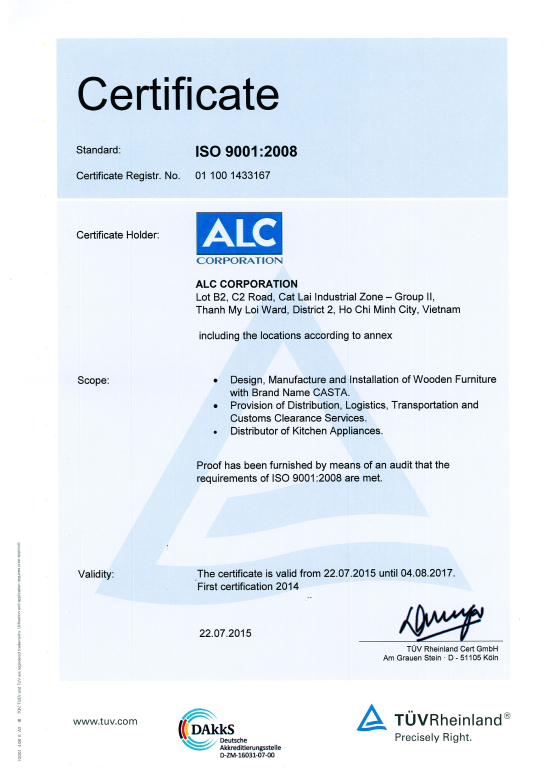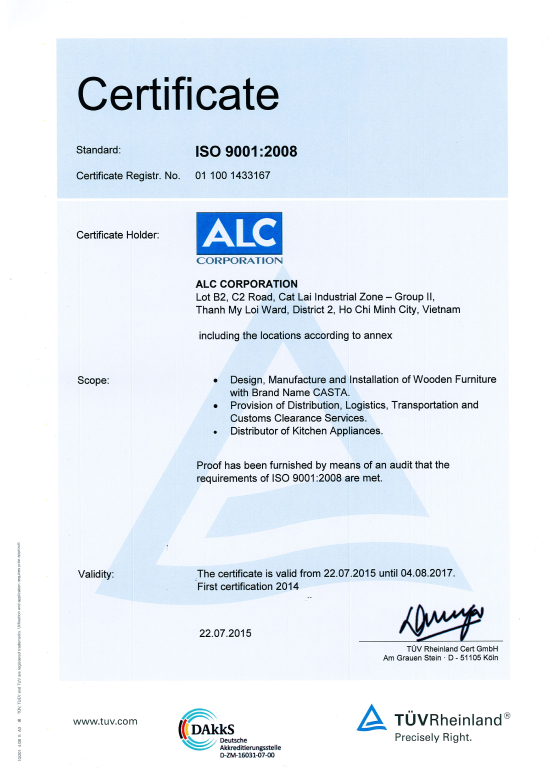ADA vanity is essential fixtures in bathrooms, designed to meet the standards set by the Americans with Disabilities Act (ADA). The purpose of ADA regulations is to ensure that public, commercial, and even some residential spaces are accessible to individuals with disabilities, particularly those who use wheelchairs or have limited mobility. For bathroom vanities, this means designing products that allow for easy access, adequate knee clearance, and appropriate countertop height, among other features.
By understanding and implementing ADA-compliant bathroom vanities, contractors, cabinet/furniture brands, and companies can create more inclusive and accessible environments for their clients. This blog will provide insight into ADA-compliant vanities, the key features to consider, and how these vanities meet regulatory requirements while offering functional and aesthetic value to any bathroom project.
Table of Contents
What Is ADA Compliance in Bathroom Vanities?
ADA compliance in bathroom vanities refers to specific design and construction guidelines that ensure the fixture is accessible to individuals with disabilities. The Americans with Disabilities Act outlines several requirements to make public and commercial spaces more user-friendly for people with varying mobility needs.
Vanity Height
The height of an ADA vanity countertop must not exceed 34 inches (86 cm). This is crucial to ensuring that individuals using wheelchairs can comfortably reach the sink and faucet. A lower height makes it easier for users to wash their hands, access toiletries, and use the mirror.
Knee and Toe Clearance
Adequate space underneath the vanity is essential. ADA regulations mandate at least 27 inches (69 cm) of clearance in height, 30 inches (76 cm) in width, and 19 inches (48 cm) in depth under the vanity. This ensures that wheelchair users can roll under the sink with ease, enabling them to use the vanity without obstruction.
Countertop Depth and Reach Range
The depth of the countertop should be no more than 25 inches (63.5 cm) to ensure that users can comfortably reach the faucet and other controls. In addition, the sink and faucet must be located within an accessible reach range for users who may have limited reach or strength.
Faucet Access
ADA-compliant faucets must be easy to operate with one hand and require minimal force. Lever-operated, touch-activated, or electronically controlled faucets are recommended. They should also be located in a position that is easily accessible without requiring users to stretch.
By following these guidelines, contractors and furniture brands can ensure that their bathroom vanities meet ADA standards and provide accessibility to all users.
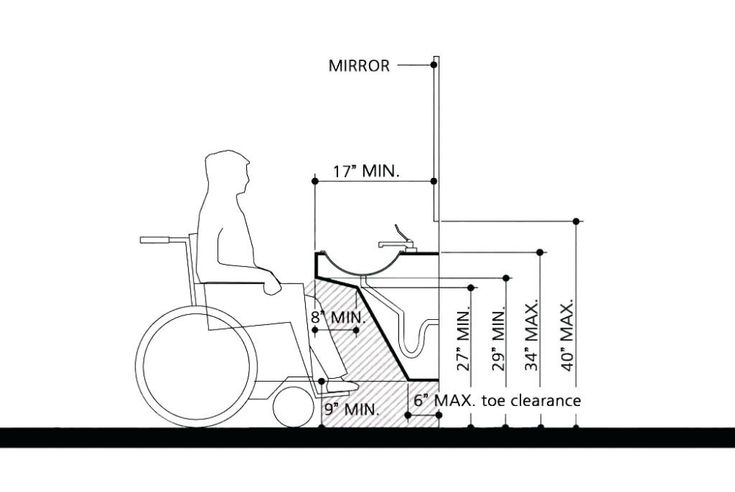
Learn more: Top 10 Vanity Manufacturers Setting the Standard
Key Features of ADA Vanity
ADA vanity differs from standard bathroom vanities in several key ways. Here are the primary features that make them accessible and functional for individuals with disabilities:
Height Requirements
ADA regulations specify that the maximum height for a vanity should not exceed 34 inches from the floor. This allows for wheelchair users to easily access the sink and countertop, ensuring they can comfortably use the vanity without needing assistance.
Knee and Toe Clearance
The space beneath the vanity must be sufficient for individuals in wheelchairs to roll up close to the sink. The recommended clearance is 27 inches in height, 30 inches in width, and 19 inches in depth. This allows users to position themselves directly in front of the sink without obstruction from cabinetry or support structures.
Accessible Fixtures and Controls
ADA vanity include accessible sink fixtures such as lever-operated or touchless faucets, which are easy to operate with minimal effort. These features are crucial for individuals who may have limited hand strength or dexterity.
Countertop Depth and Reach
The countertop depth should not exceed 25 inches to ensure that users can reach the faucet and other accessories without straining. Sinks should be positioned within a reach range that accommodates users of varying heights and abilities.
Additional Features
Some ADA vanity also include open storage solutions that are easily accessible without requiring bending or stooping. Handles and knobs should be large and easy to grasp for individuals with limited fine motor skills.
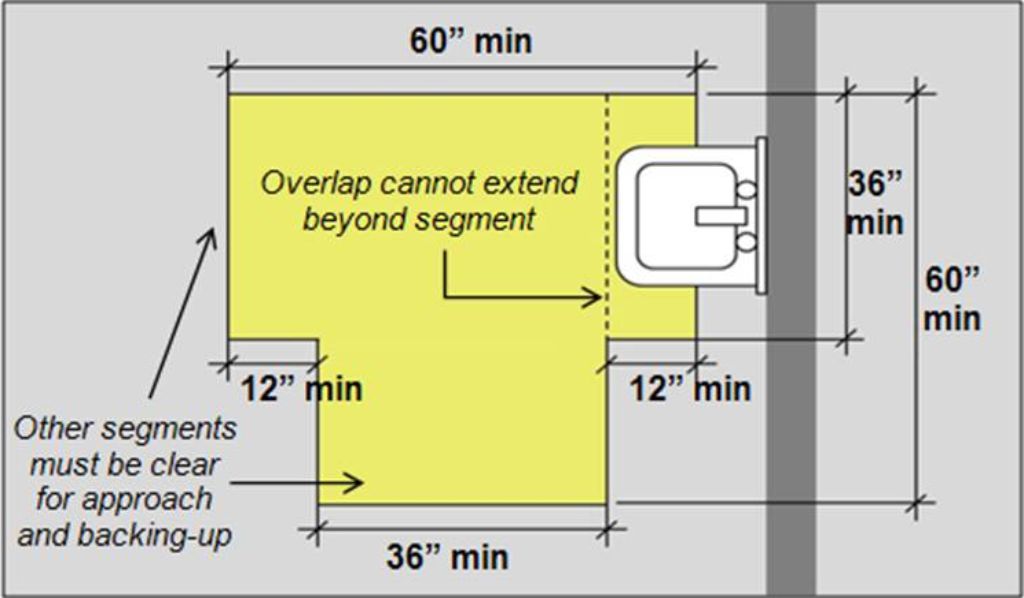
ADA Compliant Vanity vs. Traditional Vanity
ADA vanity differs from traditional bathroom vanity in several critical ways, particularly in terms of dimensions, functionality, and installation. Here’s a comparison of the two types:
| Feature | ADA Compliant Vanity | Traditional Vanity |
| Height | 34 inches maximum | Typically between 34-36 inches |
| Knee Clearance | 27 inches high, 30 inches wide, 19 inches deep | No specific clearance |
| Countertop Depth | Maximum 25 inches | Can be deeper than ADA standards |
| Faucet Accessibility | Operable with one hand, minimal effort | May require twisting or tight grasping |
| Primary Use | Designed for accessibility | Designed primarily for aesthetics and storage |
Alt text: Side-by-side comparison of ADA vanity and traditional vanity, highlighting key differences in height, clearance, and functionality.
An ADA-compliant vanity is optimized for accessibility, ensuring that individuals with disabilities or limited mobility can use the bathroom comfortably. In contrast, traditional vanities often prioritize aesthetics and storage without the consideration of these accessibility features.
Why ADA Vanities Are Crucial for Public and Commercial Spaces
In public and commercial spaces, installing ADA vanity is not just a matter of good practice but a legal necessity. The ADA mandates that public restrooms, commercial buildings, and other public facilities must provide accessible bathroom facilities for individuals with disabilities.
Legal Compliance
ADA compliance is a legal requirement for businesses, and failure to comply can result in substantial fines and legal action. According to the U.S. Department of Justice, first-time violations of ADA standards can result in fines of up to $75,000, with subsequent violations carrying penalties of up to $150,000. Ensuring that vanities meet ADA standards helps businesses avoid costly legal issues.
Inclusive Design
Providing accessible restrooms in public and commercial spaces demonstrates a commitment to inclusivity. ADA vanity ensures that all users, including those with disabilities, can use the restroom facilities independently and with dignity.
Enhancing Customer Satisfaction
Installing ADA-compliant vanities in public or commercial restrooms can enhance the overall experience for all users. By accommodating individuals with disabilities, businesses create a welcoming environment that fosters loyalty and positive reviews.
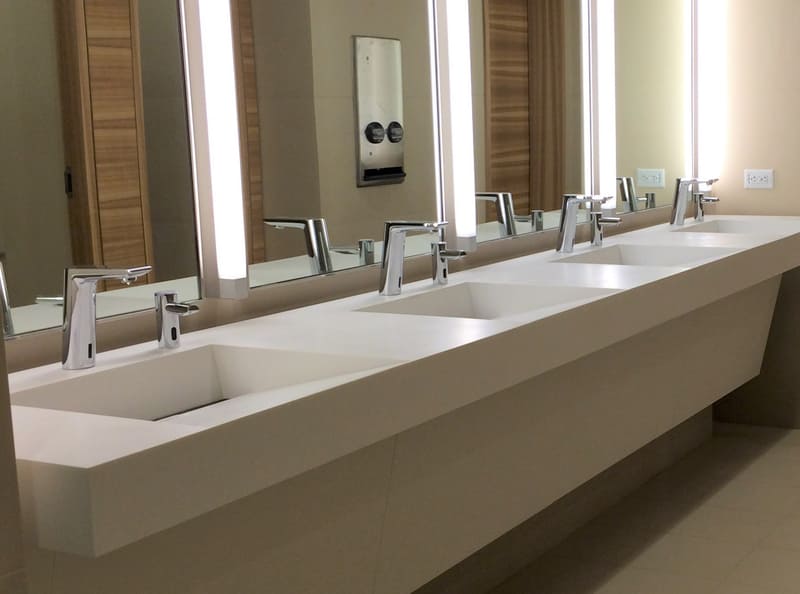
Importance of ADA Certification and Regulations
Meeting ADA compliance for bathroom vanities goes beyond designing a functional product; it requires adherence to specific regulatory and certification processes. For contractors and companies, ensuring that vanities meet ADA standards is essential to avoid potential legal complications and ensure product quality.
Certification Processes
To certify a product as ADA-compliant, manufacturers must ensure that their vanities meet the specific guidelines set forth by the ADA. This may involve testing the product’s dimensions, clearance space, and usability to verify that it complies with all necessary regulations.
Adherence to Local Building Codes
In addition to federal ADA standards, contractors should be aware of local building codes and regulations that may apply. Some states or regions have additional accessibility requirements that must be met in public and commercial spaces.
By ensuring that vanities meet these regulations, contractors and brands can demonstrate their commitment to accessibility and avoid any potential legal issues.
Learn more: Choosing the Right RTA Bathroom Vanity Cabinet for Your Space
Customizing ADA Vanity for Residential Use
While ADA vanity are commonly associated with commercial and public restrooms, they can also be customized for residential use. Homeowners who have elderly family members or individuals with disabilities may require ADA-compliant bathroom fixtures to improve accessibility at home.
Style and Functionality
ADA vanity can be designed to fit the aesthetic preferences of any home, blending accessibility with style. By choosing materials such as natural wood, stone, or modern finishes, homeowners can maintain a cohesive design while ensuring that the vanity meets accessibility requirements.
Storage Solutions
Residential ADA-compliant vanities can include open shelving, pull-out storage, or easily accessible compartments that offer functionality without compromising accessibility.
Practicality for Aging in Place
For homeowners planning to age in place, installing ADA vanity ensures that the bathroom remains accessible as mobility needs change. This allows for greater independence and safety in the home as individuals grow older.
ADA Vanity Trends and Innovations
Innovative design solutions and emerging trends are driving improvements in ADA-compliant vanities, making them both functional and stylish.
Adjustable Height Vanities
Adjustable height vanities are gaining popularity, allowing users to change the height of the vanity to suit their needs. This is especially beneficial in shared spaces, where individuals with different accessibility requirements may use the bathroom.
Sustainable Materials
Eco-friendly materials such as recycled wood, bamboo, and low-VOC (Volatile Organic Compound) finishes are becoming increasingly popular for ADA-compliant vanities. These materials offer both sustainability and style, allowing contractors to meet both environmental and accessibility standards.
Smart Technology Integration
The integration of smart technology, such as touchless faucets and motion-sensor lighting, is transforming ADA-compliant vanities into more user-friendly fixtures. These innovations enhance ease of use and create a more seamless experience for users with disabilities.
Learn more: Low VOC Cabinets – Healthier Solutions for Contractors and Cabinet Brands
Casta Cabinetry: High-Quality ADA Vanities
Casta Cabinetry specializes in producing high-quality ADA-compliant vanities that combine accessibility with superior craftsmanship. Using advanced European manufacturing technology, Casta Cabinetry ensures precision in the design and production of vanities that meet all ADA requirements.
Commitment to Quality
Casta Cabinetry uses only the highest-quality materials, including certified wood that is both sustainable and health-friendly. This ensures that their products are durable, safe, and eco-conscious.
Customization Options
Contractors and businesses working with Casta Cabinetry can choose from a variety of customization options, ensuring that ADA-compliant vanities not only meet accessibility standards but also fit the design and functionality needs of their clients.
Comprehensive Support
Casta Cabinetry is committed to supporting clients throughout the entire process, from design and manufacturing to delivery and installation, ensuring that ADA-compliant vanities are integrated seamlessly into every project.
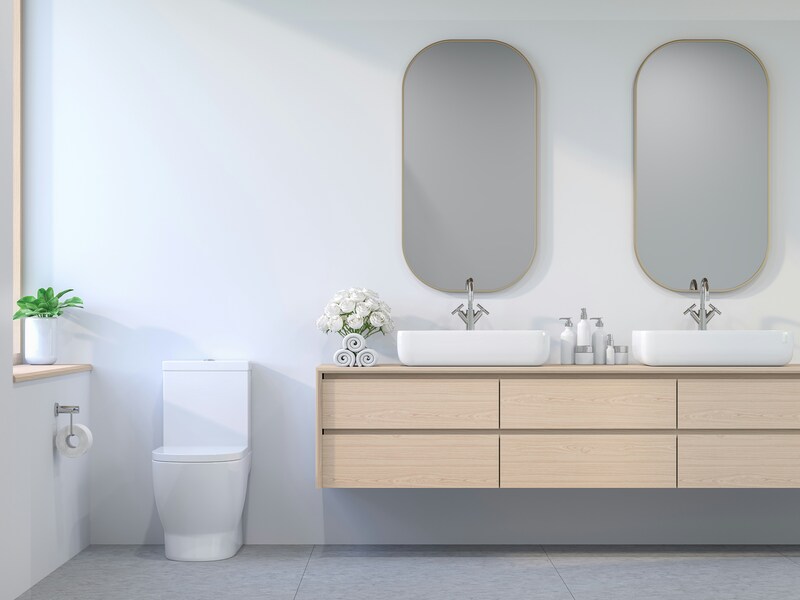
Conclusion: Why ADA Vanities Are the Right Choice
Choosing ADA-compliant vanities is a crucial decision for ensuring accessibility, meeting legal standards, and enhancing user experience in both commercial and residential spaces. ADA-compliant vanities not only accommodate individuals with disabilities but also create inclusive environments that benefit everyone. By working with a trusted partner like Casta Cabinetry, contractors, cabinet brands, and companies can provide high-quality, ADA-compliant bathroom solutions that meet the needs of all users.
FAQ
What is an ADA-compliant vanity?
What is the maximum height of an ADA-compliant vanity?
What are the key features of an ADA-compliant vanity?
Can ADA-compliant vanities be customized?
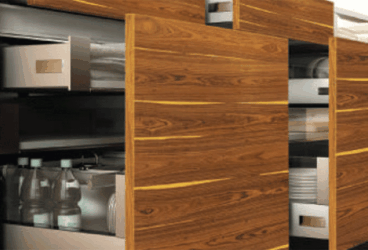
MDF vs Plywood for Kitchen Cabinets – Which is Better?...
MDF vs Plywood for kitchen cabinets is one of the most important decisions contractors and furniture brands must make wh...
11/14/2025 | David Nguyen
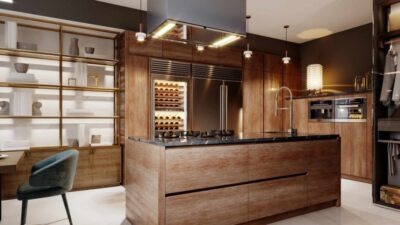
Plywood Kitchen Cabinets: Pros and Cons Explained for Contra...
Plywood kitchen cabinets are now one of the most preferred options in modern kitchen manufacturing, combining durability...
11/12/2025 | David Nguyen
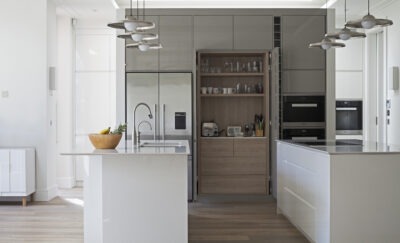
Best Italian Kitchen Cabinets: Modern Design, Precision Craf...
Italian kitchen cabinets represent the gold standard in modern kitchen design — celebrated for their craftsmanship, slee...
10/29/2025 | David Nguyen
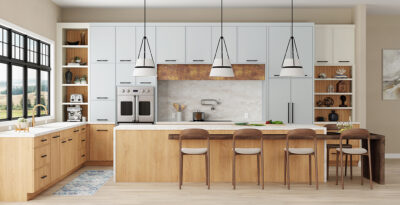
European vs American Kitchen Cabinets: Key Differences &...
European vs American kitchen cabinets is a core decision for anyone specifying cabinetry for modern buildings or homes. ...
10/27/2025 | David Nguyen
Contact us
Casta is always ready to listen and answer all customers' questions
